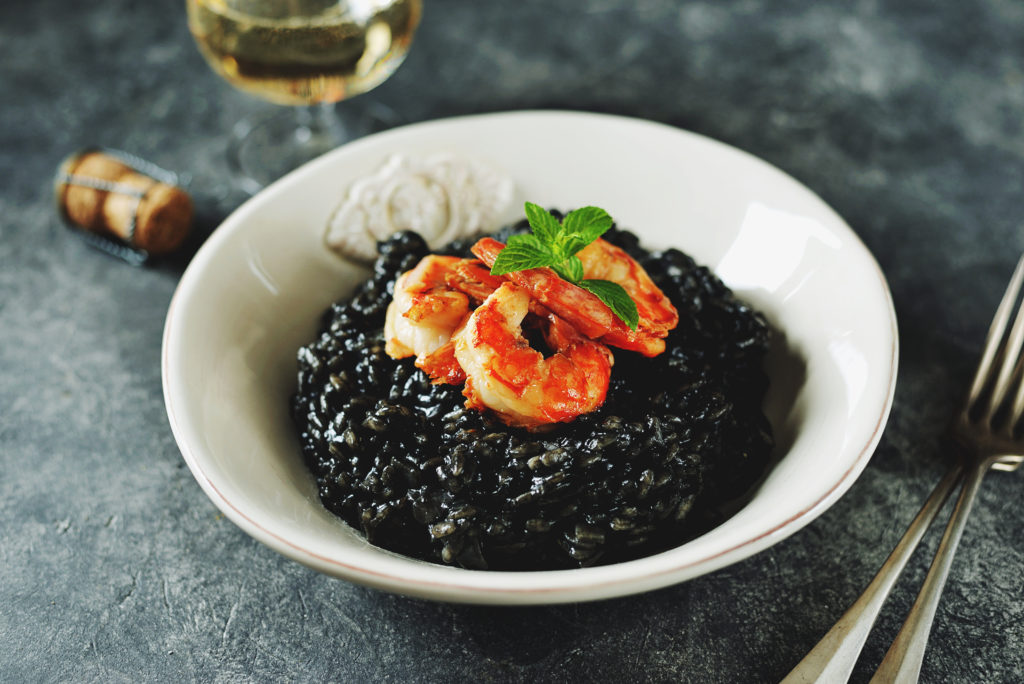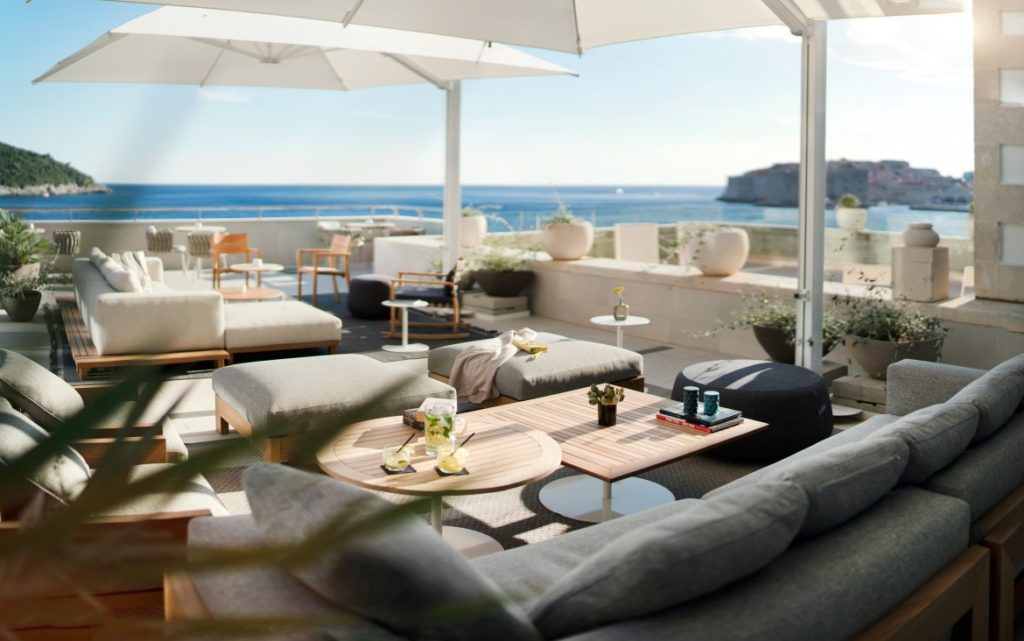Dubrovnik is one of the world’s most magnificent walled cities, overlooking the calm blue Adriatic Sea. Once the capital of the mighty sea-faring Republic of Ragusa (1358-1808), Dubrovnik is now Croatia’s most upscale destination. The pedestrian-only Old Town is known as one of the world’s finest and most perfectly preserved medieval cities, packed with aristocratic palazzi and elegant Baroque churches within sturdy medieval fortifications.
Outside the city walls, suburban Dubrovnik exudes Mediterranean elegance: gardens are an explosion of colorful bougainvillea and oleanders; trees are weighted down with figs, lemons, oranges, and peaches.

Top Things to Do

1. Walk the Ancient City Walls – Dubrovnik’s imperious walls are one thing that qualified the city for UNESCO listing. The origins of these white limestone defenses go back to the 600s. Still, their current form dates to the 15th century when Constantinople’s fall was all the warning Dubrovnik’s officials needed that the Ottomans were on their way! It will take an hour or so to make the full circuit along the battlements, stopping for the city’s supreme panoramas backed by the Adriatic.
2. Take a Cable Car to Mount Srd – Undoubtedly, the best view of Dubrovnik can be had from the crest of Mount Srd, which looms more than 1,350 feet above the city a short way inland. In 1969 a cable car was built serving the summit, operating until midnight during the peak summer months. By day you’ll never forget the vistas of Dubrovnik’s towers and walls, the baked clay tiles of the city’s houses, and the evergreen offshore island against the cobalt Adriatic. At night you can gaze out to the west to see the sun setting behind the city.
3. Stroll around Old Town – At times, the twisting streets of Dubrovnik’s old town will feel like a movie set, and you’ll find you can work up a big appetite if you let your curiosity guide you down all the little alleyways. You can get your bearings on Placa, Dubrovnik’s old main street; a straight and broad limestone channel beneath grand old houses. As you walk, you’ll notice that nearly all of these buildings share the same floor plan, and that’s due to a citywide decree on building designs following an earthquake and fire in the 17th century.

4. Explore Lokrum Island – To escape the crowds, catch a ferry from the port to this stunning island just 15 minutes away. The island is covered almost entirely with a deep green pine forest that you can amble through via walking trails. These walking routes lead to the coast, where you’ll come across rocky coves with waters ideal for swimming and even families of peacocks brought to the island by Maximilian, the 19th-century Austrian Archduke.
Make your way to the 19th-century Napoleonic Fort Royale. From the fort, you can catch stunning views of Old Town. The remains of a medieval Benedictine monastery can also be found on the island – today, it houses a restaurant and a replica of the iron throne from “Game of Thrones.”
Food & Drink

Black Risotto – Being surrounded by sea and with fishermen delivering their daily catch to restaurants across the city, it should come as no surprise that Dubrovnik offers some of the best seafood dishes. Black Risotto, or Crni rižot, gets both its name and color from gloriously dark, velvety squid ink. At some restaurants, they may incorporate mussels, clams, and other shellfish into the dish, making it a real harvest of the produce of the Adriatic.
Šporki makaruni – A traditional Croatian dish originating from the Dubrovnik area, Šporki makaruni translates as “dirty macaroni.” The dish dates back to Dubrovnik’s aristocratic days when the wealthy would, after having eaten all the best meat, mix the remaining meat sauce with macaroni for their servants on feast days and at celebrations. Made with a combination of macaroni pasta, beef, pork fat, onions, tomatoes, red wine, parsley, garlic, cloves, bay leaves, salt, and pepper. As a finishing touch, the dish is traditionally topped with grated sheep or goat cheese. Simple to make and, more importantly, tasty to eat.
Brudet – Probably the most typical Dalmatian dish. It is a rich fish stew prepared in all parts of the Dalmatian coast and islands. Much like black risotto, it’s a traditional meal served in most Dubrovnik restaurants and usually served with cooked polenta, which soaks up the tasty fish broth. A true brudet should have at least three different kinds of fish. Most commonly used are grouper, scorpionfish, monkfish, sea bass, sea-bream, eel, and John Dory. It is cooked in a single pot without stirring. Brudet is a heavenly divine soul dish, a must-try while in Dubrovnik.
Rozata – A type of custard pudding made with a few basic ingredients — eggs, milk, and sugar, flavored with a local rose liqueur known as Rozalin. The creamy mixture is baked in caramel covered ramekins. The process results in a custard that is generously coated with a sweet caramel topping.
The dessert originates from Dubrovnik, where it has been prepared since the Middle Ages. Still, the simplicity of ingredients and the method of preparation helped keep this desert unchanged for centuries. Due to the refreshing combination of lemon zest, rose liqueur, and caramel, rozata is a dessert best enjoyed on a hot summer day.
Rakija – Ubiquitous in Croatia, rakija is a brandy made with plums, pears, pomegranate, or other fruits. The locals believe that rakija is a good remedy for cold and stomach aches.
Shopping
Gundulićeva poljana – Right in Dubrovnik’s Old Town, behind the Church of St Blaise, the main market fills the enclosed square of Gundulićeva poljana six days a week. As well as being the busiest, this is the most varied of Dubrovnik’s markets, with organic honey, jams, herbs, spices, oils, and lavenders on many stalls, interspersed with heaps of tomatoes, peppers, apples, grapes, and oranges. If you look hard enough (or ask!), you may also find home-made rakija spirit and wine.


Shopping Tip
Traditional jewelry always makes the perfect souvenir.
The Croatian Botun is a style of filigree jewelry that is unique to Dalmatia. Though normally associated with the town of Sibenek, every town has a little different take on the design of the filigree. The earring on the left is from Split and the one on the right is from Dubrovnik.
For about $10 a pair, you can buy several to bring back for friends and family.
Recommended Hotels
Hotel Excelsior

The spectacular seaside setting overlooking both the Adriatic and the ancient Old Town, combined with flawless service and an illustrious history of royal and celebrity guests, mark the five-star Hotel Excelsior Dubrovnik, located in an historic 1913 villa, as an iconic landmark hotel.
Pucic Palace Hotel


comments load here